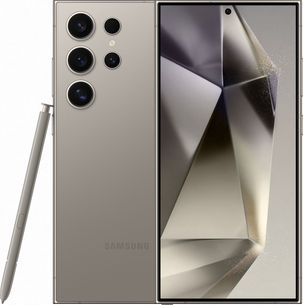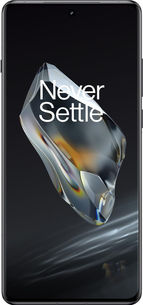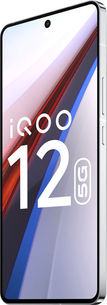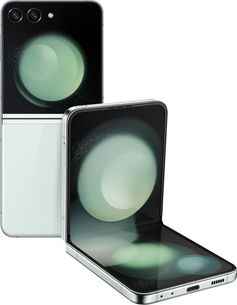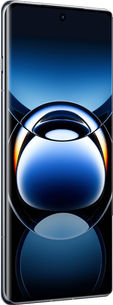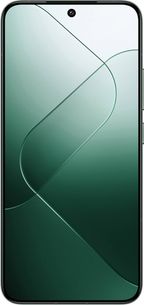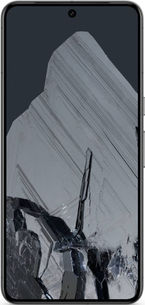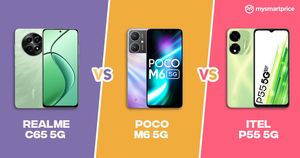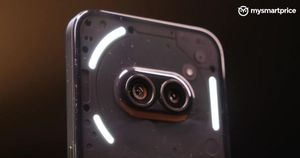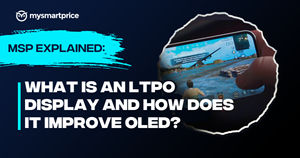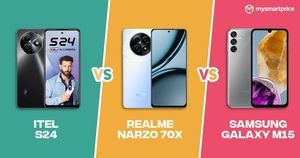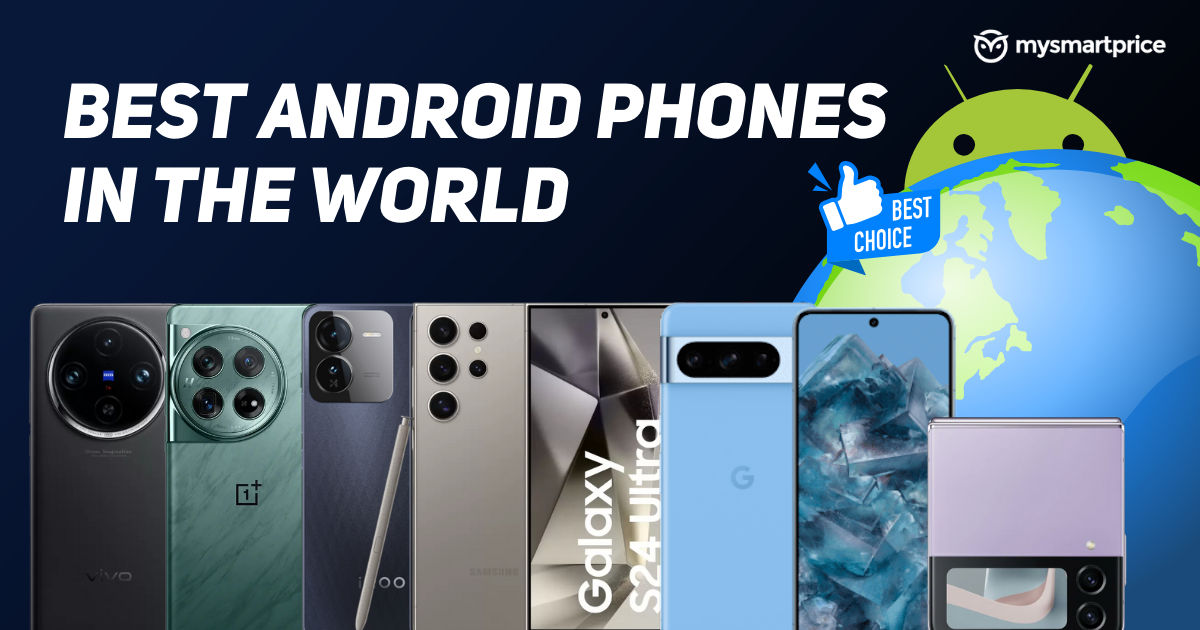
Finding the best smartphone can be tricky, especially with new models popping up almost every week. If you’re after the best Android phones in the world, you’re in luck. In this article, we’ve put together a list of the best Android smartphones, focusing on performance, software, camera quality, and more. We’ve also considered AnTuTu scores to help you find the best Android smartphone.
Note: Please remember that the smartphones listed below are not ranked in any particular order. Each of them excels in its own way.
Table of Contents
Samsung Galaxy S24 Ultra
- Galaxy AI: Samsung significantly emphasised AI with its 2024 flagship smartphones. The Galaxy S24 Ultra incorporates Galaxy AI, a suite of AI tools specially curated for Samsung Galaxy S24 series users. It includes AI-powered photo editing tools, Writing Assist, Live Translate, Circle to Search, and Note Assist. However, since these are the early days of AI, these tools are imperfect and can sometimes be slow or inaccurate.
- Performance: The Galaxy S24 Ultra draws power from the most powerful chipset available on the Android front, the Snapdragon 8 Gen 3 for Galaxy. It is a custom-made version of Qualcomm’s top-tier Snapdragon 8 Gen 3 processor designed for Galaxy S24 Ultra users. It offers a slight bump in clock speed compared to the regular 8 Gen 3, resulting in a bit more processing power. This chip also prioritises AI capabilities, leading to comparatively better performance in AI-powered features.
- Cameras: The Galaxy S24 Ultra’s impressive camera setup features a 200-megapixel primary camera and a new 50-megapixel telephoto camera with 5x optical zoom. It captures detailed shots with vibrant colours in daylight but struggles a bit in low light, sometimes producing noisy images. Portrait mode works well but might add a reddish tint to skin tones. The selfie camera takes sharp photos, especially in portrait mode, though it may miss including everyone in group shots. The phone also offers a Generative Edit feature for image enhancement, though it can be inconsistent. Overall, the camera system performs well across different conditions.
- Display: The Galaxy S24 Ultra flaunts a 6.8–inch Dynamic LTPO AMOLED with a 120Hz refresh rate, 1440 x 3120 pixels resolution, and peak brightness of 2600 nits. It is a sharp, responsive flat screen with rich colours and smooth visuals. The addition of Corning Gorilla Armour glass provides durability, protecting the screen from daily wear and tear effectively. High brightness levels ensure legibility outdoors, and the panel supports HDR10 and HDR10+ content for an enhanced viewing experience. Overall, the Samsung Galaxy S24 Ultra display impresses with its quality, durability, and performance.
- Battery and Charging: The smartphone packs a 5000mAh battery, easily lasting a day and a half with moderate usage. It can extend to two days with the Always On feature off. The smartphone supports wired charging, which takes longer than usual, but it also offers 15W wireless charging and even 4.5W reverse wireless charging.
AnTuTu Overall benchmark score analysis
| Pros | Cons |
| Striking, bright and vivid display |
Costlier than ever
|
| Anti-reflective coating is a godsend |
Unwieldy size, sharp edges
|
| Excellent and reliable battery life |
Charging speeds need an upgrade
|
| Circle to search and Generative Edit are useful tools |
Some AI features need refinement
|
|
Great camera setup, useful 5x periscope lens
|
|
|
Good performance
|
|
|
7 years of software updates
|
OnePlus 12
- Design: The latest flagship offering from OnePlus carries the same design language as its predecessor. It also has an IP67 certification for dust and water resistance. The standout aspect is the camera island on the rear, accompanied by textured finishes in Flowy Emerald or Silky Black options. Button and port placement have been rearranged for improved usability, while the front display curves gently for an immersive viewing experience.
- Display: The OnePlus 12 features a 6.82-inch LTPO AMOLED display with a 120Hz refresh rate, Dolby Vision, 1440 x 3168 pixels resolution, and a whopping peak brightness of 4600 nits. It is an immersive and practical screen featuring a gently curved design that enhances the viewing experience. With ample brightness, the screen ensures clear visibility even in harsh sunlight, making it ideal for outdoor usage. The smartphone also boasts a proprietary picture quality engine, the Display P1 chip, promising enhanced visuals without compromising battery life.
- Performance: It is powered by the Snapdragon 8 Gen 3 chipset paired with up to 16GB of LPDDR5X RAM and Adreno 750 GPU. OnePlus has further optimised the user experience with its Vitalization Engine, ensuring efficient battery consumption while maintaining peak performance. Whether casual browsing or intensive gaming, the OnePlus 12 delivers a delightful experience, allowing users to enjoy high-performance gaming even at maximum settings and 90Hz refresh rate.
- Cameras: The smartphone features a triple rear camera setup with a 50MP primary sensor, a 64MP periscope telephoto sensor, and a 48MP ultrawide sensor. On the front, it features a 32MP selfie shooter. With the Hasselblad partnership, photos are sharp with vibrant colours and minimal noise, suitable for various scenarios like landscapes and portraits.
- Battery and Charging: Faster charging and fantastic battery life have been the key attractions of OnePlus devices, and the OnePlus 12 is no different in that department. The smartphone packs a 5400mAh battery and supports 100W wired charging, 50W wireless charging, and 10W reverse wireless charging.
AnTuTu Overall benchmark score analysis
| Pros | Cons |
| Great cameras with optical zoom capabilities |
The design may divide people
|
| Visually-stunning display |
The curved display could have better palm rejection
|
| Superb performance |
OnePlus has not joined the AI train, yet
|
|
Impressive battery life with super-fast charging
|
|
|
Clean user experience
|
|
|
Ticks all the boxes of a flagship – IP67 rating, Wireless charging, etc.
|
Vivo X100 Pro
- Design: The X series represents the most premium end of Vivo devices, which is reflected in the latest addition to the lineup, the Vivo X100 Pro. It has a premium design with a large, eye-catching camera module that takes up about a fourth of the phone’s rear panel. The phone features a slippery, matte glass back available in two colours, with a faux leather finish on the X90 Pro that offers a better grip. Despite its large footprint and top-heavy rear camera design, the phone still feels more compact than a Galaxy S23 Ultra. With IP68 water and dust resistance certification, the X100 Pro is a solid choice for those seeking a durable and high-performing smartphone.
- Display: The Vivo X100 Pro flaunts a 6.78-inch LTPO AMOLED display with a 120Hz refresh rate and a peak brightness of 3000 nits. It also features a vibrant and power-efficient display, with brighter and shallower curves than its predecessor. The display is nearly identical to the X90 Pro, with smooth touch inputs and good colour accuracy.
- Performance: Unlike most smartphones on this list, the Vivo X100 Pro draws power from the MediaTek Dimensity 9300 chipset, a flagship offering from MediaTek. It is powerful and efficient, offering smooth and fast performance for even the most demanding tasks. The phone handles gaming easily, and its thermal management ensures it stays cool under pressure.
- Cameras: In terms of optics, the smartphone houses a 50MP + 50MP + 50MP Zeiss camera setup at the back, along with a 32MP selfie shooter. The highlight of this device is its portrait mode, which offers a range of focal lengths for different scenarios. The camera performs well in various lighting conditions, including sunsets, sunrises, low-light, and artificially lit shots.
- Battery and Charging: The Vivo X100 Pro has a 5400mAh battery with 100W wired and 50W wireless charging support. With moderate usage, the smartphone lasts about a day and a half. The charging speed is impressive, reaching 60% in just 30 minutes.
AnTuTu Overall benchmark score analysis
| Pros | Cons |
| Five focal lengths for high-quality portraits |
Notifications need refinement
|
| Sunshot mode works well |
Average screen-off time
|
| Tons of LUTs to play around |
Slippery rear panel, faux leather finish was better in X90 Pro
|
|
Great performance
|
|
|
IP68-certification (finally)
|
|
|
Good screen-on time
|
|
| Fast charging | |
| Good display |
iQOO 12
- Performance: iQOO devices are known for their cutting-edge prowess, and its latest flagship, the iQOO 12, is no different. It was the first smartphone in India to feature the latest Snapdragon 8 Gen 3 chipset. It delivers a smooth and seamless user experience, efficiently handling demanding apps and games.
- Cameras: The optics department is another department where iQOO has worked hard to deliver exceptional camera capabilities and performance. The iQOO 12 flaunts a 50MP primary sensor, 64MP periscope telephoto sensor, 50MP ultrawide sensor, and 16MP selfie shooter. The camera performance is excellent, with good dynamic range and accurate colours. The low-light performance is impressive, with minimal noise and good detail preservation.
- Design: The iQOO 12 boasts a sleek and stylish design that exudes premium quality. The device is built with a metal frame and glass back, giving it a solid and durable feel in the hand. The iQOO 12 also features a unique “3D Arc” design on the back, which looks visually appealing and provides a comfortable grip.
- Display: It features a 6.78-inch LTPO AMOLED display with a 144Hz refresh rate, 1260 x 2800 pixels resolution, and 3000 nits of peak brightness. The display offers vibrant and accurate colours, making it perfect for watching videos, gaming, and browsing the web.
- Battery and Charging: The device packs a 5000mAh battery with 120W fast charging support. It delivers up to 6 hours of screen on time on a single charge and can go from 0 to 100% in just half an hour.
AnTuTu Overall benchmark score analysis
| Pros | Cons |
| Striking design |
Very slippery back panel
|
| Excellent display, 144Hz, HDR10 |
Inconsistency in the camera output
|
|
Reliable battery life and fast charging speeds
|
|
|
Raw performance on tap, good gaming capabilities
|
|
|
No-bloat Android 14 experience
|
|
|
Good camera setup
|
|
|
Very well priced
|
OnePlus Open
- Design: The OnePlus Open has become the favourite book-style foldable of tech enthusiasts, mainly because of its design. Despite being a foldable device, the OnePlus Open is easy to carry due to its lightweight and form factor. It also comes with an IPX4 rating for water resistance.
- Display: The other reason people love this foldable is its cover display. It features a 6.31-inch cover display, which resembles a regular smartphone display. When unfolded, it graces users with the 7.82-inch Foldable LTPO3 Flexi-fluid AMOLED display with a 120Hz refresh rate and 2800 nits of peak brightness. Interestingly, the crease on the OnePlus Open is almost non-existent when looking at it from a straight angle.
- Performance: The device gets power from the Snapdragon 8 Gen 2 chipset, which feels a bit dated by today’s standards since the Snapdragon 8 Gen 3. But it still delivers impressive performance and can easily handle heavy apps and games. Multitasking on the OnePlus Open is another vital aspect of the device, thanks to 16GB of LPDDR5X RAM and 512GB of UFS 4.0 storage.
- Cameras: Regarding cameras, the OnePlus Open houses a 48MP primary sensor, 64MP telephoto sensor, and 48MP ultrawide sensor, along with a 20MP sensor on the foldable display and a 32MP selfie shooter on the cover display. The optics of the OnePlus Open have been praised as one of the best and most reliable rear camera setups on a foldable smartphone, where the 3x telephoto camera delivers almost DSLR-like results.
- Battery and Charging: The device comes with a 4,805mAh battery, which delivers up to 7 hours of screen on time on a single charge. Interestingly, the smartphone has an 80W charger in the box but supports only 67W charging, which takes around 47 minutes to fully charge from dead.
AnTuTu Overall benchmark score analysis
| Pros | Cons |
| Good performance, and multitasking abilities |
No stylus included
|
| Lightweight, gapless hinge |
No official dust resistance
|
| Excellent rear camera output | Expensive |
|
Dependable battery, fast charging
|
|
|
Conversation-starter design
|
Samsung Galaxy Z Flip 5
- Design: The Galaxy Z Flip 5 might be your best bet if you’re into clamshell foldable smartphones. It boasts a new hinge mechanism that ensures zero gaps when the phone is folded. Despite a larger cover display, the Galaxy Z Flip 5 carries forward the visual identity of Samsung’s Flip series.
- Display: The Galaxy Z Flip 5 features a 3.4-inch Super AMOLED cover display, producing 720 x 748 pixels. When it comes to the foldable display, it packs a 6.7-inch Foldable Dynamic AMOLED display with a 120Hz refresh rate, 1080 x 2640 pixels resolution, and 1750 nits peak brightness. The only difference from the last generation is that it’s more legible under sunlight now.
- Performance: The Galaxy Z Flip 5 is powered by the Qualcomm Snapdragon 8 Gen 2 SoC and paired with up to 8GB of RAM and 512GB of storage. This powerful chip has excellent power efficiency and offers smooth, reliable performance, almost always with very little thermal throttling.
- Cameras: The Galaxy Z Flip 5 carries forward the same configuration that has kept Samsung’s pot boiling for the last two years – two 12-megapixel sensors, one primary and one for ultrawide duties. What’s changed is the image post-processing that takes advantage of the new SoC’s chops. The difference is immediately noticeable in nighttime photography, where it’s not just the primary camera that shines but also the ultrawide. Photos have much better contrast than the ones clicked by the Flip 4.
- Battery and Charging: The Galaxy Z Flip 5 features a 3700mAh battery with 25W wired, 15W wireless, and 4.5W reverse wireless charging capabilities. In terms of screen-on time, the Flip 5 can last five hours at most, which is tremendous progress compared to the previous generation without any bump in battery capacity.
| Pros | Cons |
| Unique Flex Window interface |
Slow charging
|
| Great performance |
Battery life still falls short despite improvements
|
| Convenient to carry around | Pricey |
|
Nothing short of a style statement
|
|
|
Good low-light photography
|
OPPO Find X7
- Design: The OPPO Find X7 is one of the most attractive smartphones. Its unique design stands out from the crowd. It features a circular camera housing and a two-toned rear cover. The area around the camera housing is made of glass, while the rest of the back is covered in vegan leather. The Find X7 also includes an alert slider, a feature often appreciated by users.
- Display: It flaunts a 6.78-inch AMOLED display with 2780×1264 pixels resolution, 1-120Hz refresh rate, Dolby Vision, up to 240Hz touch sampling rate, up to 4500 nits peak brightness, and 2160Hz PWM dimming.
- Performance: The device draws power from the MediaTek Dimensity 9300 chipset, which is also built on 4nm technology and paired with an Immortalis-G720 GPU for graphics. Thanks to its 16GB LPDDR5X RAM and 512GB UFS 4.0 storage, the device can easily handle multitasking.
- Cameras: There is a 50MP Sony lytia LYT808 sensor primary camera with f/1.6 aperture, OIS, and 10-bit HDR, a 50MP ultra-wide-angle lens with f/2.0 aperture, 3.5cm macro option, and a 64MP 3X periscope telephoto camera with f/2.6 aperture, 5P mirror lens, OIS, and up to 120X digital zoom.
- Battery and Charging: The OPPO Find X7 packs a 5000mAh battery with 100W SuperVOOC fast charging. It is said to charge 50% in just 10 minutes and can go from 0 to 100% in just 26 minutes.
| Pros | Cons |
| Amazing Camera System |
Only availabe in China
|
|
Gorgeous design
|
|
|
Superfast charging capabilites
|
Xiaomi 14
- Design: Considering that the camera module takes centre stage, it’s also evident from the design. The square camera island protrudes significantly but maintains an elegant appearance. Furthermore, the phone remains stable even when resting on a flat surface. Additionally, the Xiaomi 14 is equipped with IP67 certification for added durability. Speaking of longevity, the display is fortified with Gorilla Glass Victus protection.
- Display: The device features a 6.36-inch LTPO AMOLED display with 120Hz refresh rate, 1.5K resolution, 3000 nits peak brightness, Dolby Vision, and also supports HDR10+.
- Performance: The Xiaomi 14 follows the standard flagship recipe – Qualcomm’s top-notch Snapdragon 8 Gen 3 chipset paired with capacious RAM (up to 16GB) and ample storage. So, it’s unsurprising that the Xiaomi 14 flies through anything thrown at it.
- Cameras: There’s a trio of 50MP sensors to capture different scenarios – ultra-wide to extreme close-ups. The primary shooter also features OIS and you can capture up to 8K videos. Portrait lovers would enjoy playing around with the various modes with different focal lengths – from 35mm to 90mm. The company has taken care of selfie lovers too by offering a high-res 32MP snapper at the front.
- Battery and Charging: The 4,610mAh battery capacity should ensure a day’s usage. While Xiaomi was pretty late to the fast-charging party, it’s now ahead of many rivals, for it comes bundled with a 120W HyperCharger. You also get fast wireless charging capabilities at 50W.
AnTuTu Overall benchmark score analysis
| Pros | Cons |
| Impressive camera setup |
No expandable storage
|
| Compact form factor | Expensive |
|
High-quality display
|
|
|
Fast charging capabilities
|
Pixel 8 Pro
- Design: The Google Pixel 8 Pro resembles the Pixel 7 Pro, especially from afar and at the back. However, Google has made some improvements to enhance its premium feel and comfort. The glossy rear is now a soft-touch matte finish, which feels nice and avoids smudges. The corners are rounded, giving it a less boxy appearance.
- Display: The device showcases a 6.7-inch LTPO OLED display, boasting a Quad HD+ resolution of 2992 × 1344 pixels and a pixel density of 489 ppi. It offers a refresh rate ranging from 1Hz to 120Hz and a peak brightness of 2400 nits. Google refers to this LTPO display as ‘Super Actua’, which provides variable refresh rates. In terms of quality, the display stands out with its vibrant colours, deep blacks, sharpness, wide viewing angles, and impressive brightness levels.
- Performance: It draws power from Google’s Tensor G3 chipset with 12GB LPDDR5X RAM and 128GB UFS 3.1 storage. While this is not the fastest combo out there, it can surely handle almost any apps or games thrown at it. However, it’s important to keep in mind that Google devices are usually known for their software optimisation rather than having cutting-edge hardware specifications.
- Cameras: Pixel devices have always excelled in their camera capabilities, and the Pixel 8 Pro is no exception. It features a 50MP primary sensor, a 48MP telephoto sensor, a 48MP ultrawide sensor, and a 10.5MP dual PD selfie camera. Google has introduced several AI-powered editing tools, including an upgraded Magic Eraser tool that can now remove larger objects and people from photos by generating new pixels to fill the gaps.
- Battery and Charging: Regarding battery, the Pixel 8 Pro packs a 5050mAh battery and 30W wired charging, which is said to charge 50% of the device in half an hour and also supports 23W wireless charging.
AnTuTu Overall benchmark score analysis
| Pros | Cons |
| 7 years of OS updates |
Slow charging
|
| AI camera features | Expensive |
|
Polished design
|
Pixel 8
- Design: The Pixel 8 maintains the iconic Pixel aesthetic, featuring subtly rounded edges and a noticeable camera bump. Its compact design makes it easy to carry in pockets, and one of its standout features is its facilitation of one-handed usage, a quality we particularly appreciated during our testing.
- Display: The Pixel 8’s display stands out as one of its most appealing features. Sporting a stunning 6.2-inch FHD+ OLED screen with a silky smooth 120Hz refresh rate represents a significant improvement over the Pixel 7. With an outstanding peak brightness of up to 2000 nits, the Pixel 8’s display guarantees a superb viewing experience in nearly any lighting condition. Whether you’re watching movies or using it outdoors in bright sunlight, the Pixel 8’s display never fails to impress.
- Performance: The standard Pixel 8 is also powered by the Google Tensor G3 chipset. Initially, we encountered some overheating issues in specific situations. However, subsequent updates have addressed this issue. The Tensor G3 chipset represents a significant improvement over its predecessor, offering a range of advancements that effectively manage Google’s AI and machine learning capabilities.
- Cameras: Featuring a 50MP + 12MP rear camera configuration and a 10.5MP front-facing selfie camera, the Pixel 8 impresses with its camera setup. Despite sharing the exact megapixel count as its predecessor, the Pixel 8’s camera system produces outstanding results in daylight and low-light conditions. The only slight drawback is the absence of autofocus on the 10.5MP selfie camera, a feature reserved for the Pro version.
- Battery and Charging: The Pixel 8 packs a 4575mAh battery and supports 27W wired and 18W wireless charging. It can deliver around four and a half hours of screen time on a single charge, and it takes around one and a half hours to go from 0 to 100%.
AnTuTu Overall benchmark score analysis
| Pros | Cons |
| Iconic Pixel Design |
Slow charging speeds
|
| Amazing Display |
Battery life could been better
|
|
Fantastic Cameras
|
|
|
Software experience with AI
|
Best Android Phones to Buy in April 2024
Here’s all the smartphones you can buy in April 2024:
| Mobile | Price |
| Samsung Galaxy A55 | Rs 42,999 |
| Samsung Galaxy A35 | Rs 30,999 |
| Vivo V30 Pro | Rs 41,999 |
| Nothing Phone (2a) | Rs 23,999 |
| iQOO Z9 | Rs 19,999 |
| Realme 12 Plus 5G | Rs 19,999 |
| Realme NARZO 70 Pro 5G | Rs 19,999 |
| Lava Blaze Curve 5G | Rs 17,999 |
| POCO X6 Neo | Rs 15,999 |
